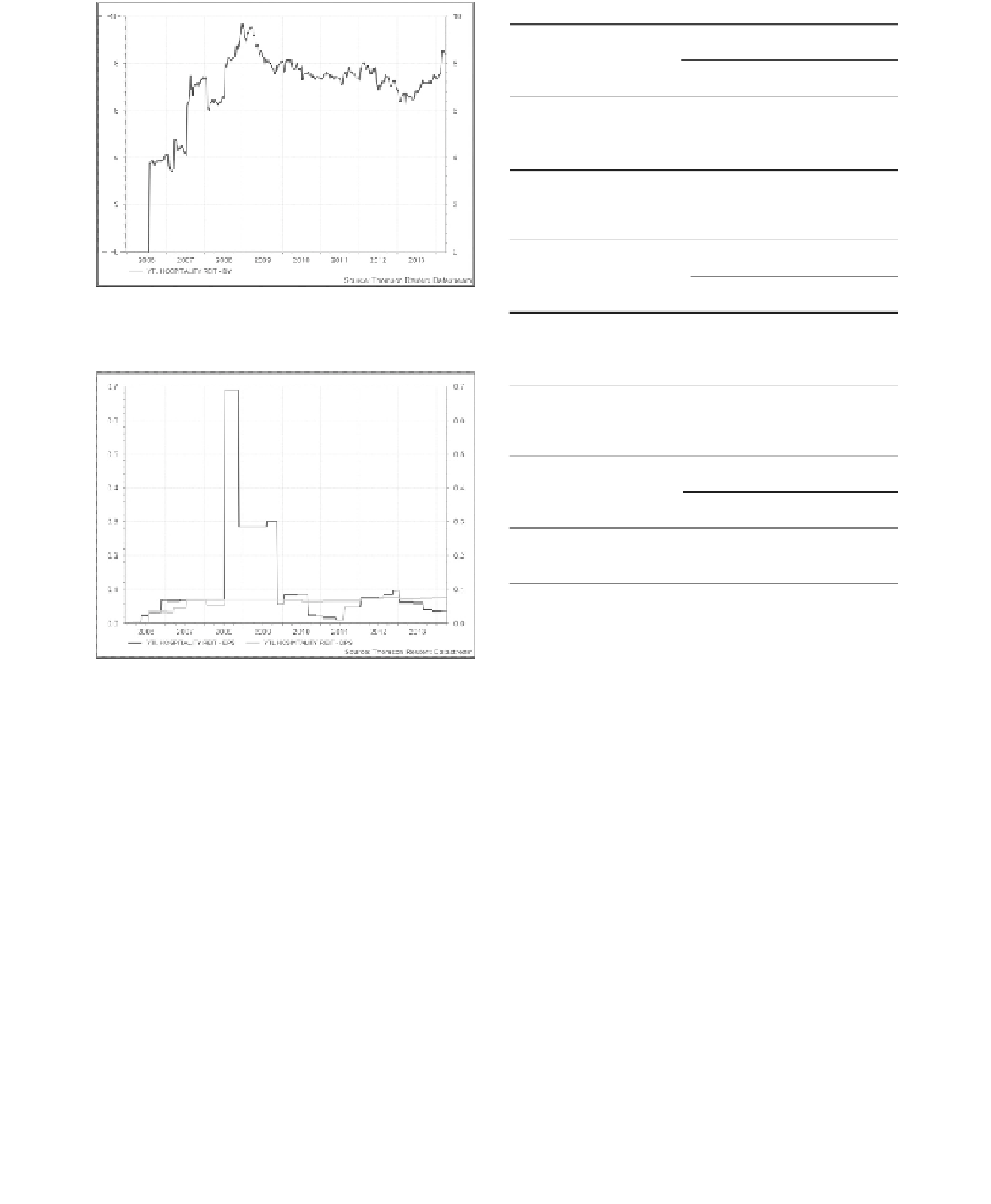Travel Reference
In-Depth Information
Table 2.
Profitability ratios.
Year
Ratio
2010
2011
2012
2013
Return on assets (%)
1.92
3.67
6.00
1.86
Return on
capital employed(%)
46
6.5
4.45
6.23
Table 3.
Operating ratios.
Year
Ratio
2010
2011
2012
2013
Figure 2.
Dividend yield.
Average collection Period
(days)
22.21
17.88
3.84
10.33
Current ratio
4.61
x
22.07
x
2.32
x
1.81
x
Table 4.
Leverage ratios.
Year
Ratio
2010
2011
2012
2013
Debt ratio
0.15
0.14
0.14
0.56
Times interest earned
10.34
8.38
2.01
3.84
tively. This indicates that the company is far from
leverage risk.
In terms of efficiency of operation, it is evi-
denced that the company may be at risk of liquid-
ity due to the declined current ratio from 2010 to
2013. Current ratio of less than 1 is a red flag. The
plausible reason behind this figure is the slow debt
collection activities which reached 10.33 days in
2013.
Figure 3.
Earnings per share and divided per share.
4.3
Ratio analysis
Table 2 shows a substantial return by the company
to its capital employed in 2010 at 46 percent mainly
due to the high dependency on equity instead of
borrowing. This is reflected in a low gearing ratio
of 0.15. The less dependency increased the abil-
ity of the company to cover the existing interest
payment with the highest times interest earned of
10.34 (see Table 4).
According to Warren Buffet, ROE is one of
the important metric in selecting a company. Buf-
fet focuses on ROE rather than on earnings per
share (Harper, 2011). Over the year 2011 to 2013,
the times interest earned and return on capital
employed begun to decrease due to the vigorous
project development which caused more capital
requirement through borrowing injected into the
company. However the ability of the company to
repay its interest are still outstanding as reflected
in the times interest earned figure which is more
than 1 for the year 2011, 2012 and 2013 respec-
5 CONCLUSION
Several sources of individual property investment
risk at a portfolio level, it is clear that many are
in the nature of the unsystematic risks that can be
diversified away by balanced portfolio construc-
tion. In conclusion, property as investment is
prone to both unsystematic and systematic risks.
While former may be diversified away, latter can-
not. Although the company is a fixed asset-ori-
ented, and the well-managed of noncurrent asset
and liabilities make it far from leverage risk, but
liquidity risk may also be observed from time to
time. The effect of balanced portfolio construction
is therefore to reduce but not abolish the property
investment risk. This shows the importance of the




Search WWH ::

Custom Search